By G. L. Pease
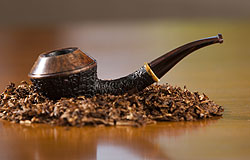 What fun! Another month, another mailbag full of great questions. As this goes on, though, my lack of mad organizational skillz is on the verge of becoming problematic. Here’s the way it should work. The mail comes in, I select those questions that seem to be of general interest, cut and paste them to a master list from which I will select the questions for a given month’s column, and remove them from the mailbag. Then, when I prepare the column for publication, I would simply move the questions from the master file to the article I’m preparing, and everything will be perfect. Nice.
What fun! Another month, another mailbag full of great questions. As this goes on, though, my lack of mad organizational skillz is on the verge of becoming problematic. Here’s the way it should work. The mail comes in, I select those questions that seem to be of general interest, cut and paste them to a master list from which I will select the questions for a given month’s column, and remove them from the mailbag. Then, when I prepare the column for publication, I would simply move the questions from the master file to the article I’m preparing, and everything will be perfect. Nice.
But, there are a couple problems. First, chaos is my middle name. Sort of. (I’m fairly certain "Chaos" begins with the letter L in some language.) Despite this deceptively simple and foolproof methodology, the probability of my not removing a question from the mailbag once its copied, or from the master list once it’s answered is actually relatively high, with the resultant probability that I could end up answering the same question not only twice, but three times. That would be a bad thing. People would think I’d lost my mind, or that I wasn’t paying attention, or both, which might be too close to the truth on any given day. That is, if they’re actually reading along.
 It might not be clear why this should concern me, and, for that matter, probably no one besides me cares, but it’s my column, so I’ll elucidate. First, there’s the unlikely, but possible chance that between answering a question the first time and the second, I may have changed my mind, leading to a mailbag full of "But, you said…" thus, amplifying the problem, onaccounta I would then have to write responses to those, as well, with the concomitant likelihood of another repeat and possible contradiction. See?
It might not be clear why this should concern me, and, for that matter, probably no one besides me cares, but it’s my column, so I’ll elucidate. First, there’s the unlikely, but possible chance that between answering a question the first time and the second, I may have changed my mind, leading to a mailbag full of "But, you said…" thus, amplifying the problem, onaccounta I would then have to write responses to those, as well, with the concomitant likelihood of another repeat and possible contradiction. See?
Of course, I could just go back and read all the old columns to be sure I’m not repeating and/or contradicting myself, but that’s too much like real work. So, if I happen to screw up, please just chuckle to yourself at my foolishness, and don’t tell Kevin, okay? On to the questions that I may or may not have answered before.
Raphael poses: I like a mixture developed by myself with cigar leaf. It is a basic English blend with 25-30% cigar leaf. The problem is that after the first half it begins to develop a harsh taste like a cigar butt which I do not like. In order to avoid that, I fill the bottom half with the regular English and then the top part with the cigar leaf mixture. It improves by doing so, but my question is if there is a way I can avoid that two mixtures combination. I need some advice on how to achieve this. I already tried several cigar leaf blends available on the market but I prefer the taste of mine in the first half. I just want to achieve that taste in the bottom without the two mixtures hassle. Any suggestions?
A: A lot depends on the cigar leaf you’re using. It can range from very mild to remarkably intense, and the burning characteristics of different leaf also varies widely. But, even with a mild cigar leaf, 25-30% is a significant amount. Since you’re developing harshness in the second half of the bowl, I’d reduce the quantity by half, and see how that behaves. If you want more intensity of flavour, without the harshness, you could use richer tasting leaf. Or, add additional Virginia to the mix to provide more sweetness and structure, or additional Orientals to offer more spice. Another technique, though one I’d try as a last resort, would be to add a little simple syrup to sweeten the mix, lower the pH of the smoke, and thus reduce its tendency towards harshness. A few ml in 100 g of tobacco might do wonders for it.
Cigar leaf is one of the most challenging tobaccos to work into a good pipe mixture. A little goes a long way – even 10% can make a pretty stout statement – and too much can really be too much. The way it interacts with the more traditional tobaccos used in pipe mixtures provides an interesting and never-ending source of exploration, but be prepared for many disappointments along the way.
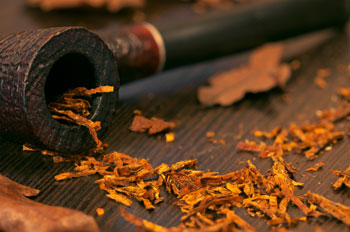 Kevin writes: Tobacco reviewers like to comment that the blend they’re writing about burns down to a fine white ash. I think some aromatics might leave a bit of gunk, but this should be a given for any English, wouldn’t it? Moreover, wouldn’t the actual color of the ash (light grey vs. white) be more a reflection on how many times he’s had to light it?
Kevin writes: Tobacco reviewers like to comment that the blend they’re writing about burns down to a fine white ash. I think some aromatics might leave a bit of gunk, but this should be a given for any English, wouldn’t it? Moreover, wouldn’t the actual color of the ash (light grey vs. white) be more a reflection on how many times he’s had to light it?
A: Tobaccos that use humectants like propylene glycol, are more likely to leave a sticky, damp ash, and since bulk aromatics and OTC tobaccos account for the majority of the pipe tobaccos sold world-wide, and these often rely on humectants and preservatives as carriers for the flavorings and for improved shelf-life, many smokers may be surprised by the clean, dry ash at the bottom of the bowl when they smoke their first examples of more natural tobaccos. Often, that surprise takes a long time to leave our consciousness.
Personally, I agree that the "clean dry ash" should be the norm, rather than the exception, but of the roughly 4 to 5-million pounds of pipe tobacco made in the US last year, and about twice that produced in Europe, most is chemically enhanced in some manner, and sometimes, these enhancements can alter the burning characteristics sufficiently so that the "clean, dry ash" is a relative rarity.
The actual color of the ash is dependent on many factors, not least of which being the mineral content of the leaf itself, and the residues of any additives that were used in the processing, but I don’t imagine that relighting has much to do with that.
From Brian (and a few others): If you’ve the time I’d appreciate your take on What Defines a Navy Flake.
A: That’s a tough one. I’ve not been able to find anything that can be relied upon as a formal definition, or even a truly credible historical reference pertaining to the origin of the term.
Some tobaccos currently and historically using this designation, as well as its derivatives, like Navy Cavendish or Navy Cut, contain burley, some don’t. Some combine Perique with Virginias and possibly air-cured leaf, others don’t. Some have rum added, others are straight. Some are flavored, others are not. No wonder we’re all confused.
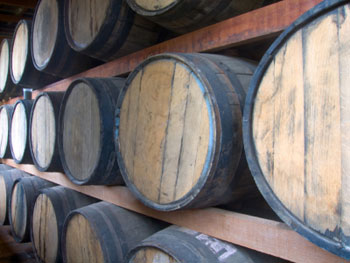 The term most likely derives from days when sailors used sugar water to moisten their tobacco before twisting the whole leaves into carottes, wrapped with canvas, bound with rope, and hidden in empty rum barrels, possibly to evade the high taxes originally imposed on processed tobaccos by Elizabeth I, and later increased by James I. (I’ve often wondered if Guy Fawkes was actually a dedicated pipe smoker, and his Gunpowder Plot was merely a religiously veiled protest over King Jimmy’s hatred of tobacco, as evidenced by his infamous Counterblaste and the usurious taxes he levied. Where’s our contemporary Mr. Fawkes when we need him?) The sugar water served to both make the tobacco more palatable, and to keep it fresh during long voyages (sugar is a humectant), the rum soaked barrels adding a pleasing aroma to the result. Only later manufacturing methods allowed for the pressing of tobacco into bars, and their subsequent cutting into the slices we know today as Navy cut or flake.
The term most likely derives from days when sailors used sugar water to moisten their tobacco before twisting the whole leaves into carottes, wrapped with canvas, bound with rope, and hidden in empty rum barrels, possibly to evade the high taxes originally imposed on processed tobaccos by Elizabeth I, and later increased by James I. (I’ve often wondered if Guy Fawkes was actually a dedicated pipe smoker, and his Gunpowder Plot was merely a religiously veiled protest over King Jimmy’s hatred of tobacco, as evidenced by his infamous Counterblaste and the usurious taxes he levied. Where’s our contemporary Mr. Fawkes when we need him?) The sugar water served to both make the tobacco more palatable, and to keep it fresh during long voyages (sugar is a humectant), the rum soaked barrels adding a pleasing aroma to the result. Only later manufacturing methods allowed for the pressing of tobacco into bars, and their subsequent cutting into the slices we know today as Navy cut or flake.
Michael ponders: My question is about organic tobaccos. and why there aren’t any in the pipe tobacco market. the trends for organic growing are so strong in foods and even textiles (for years now) that it surprises me that pipe tobacco has not followed. I know McClelland had an organic VA flake a few years back (I now have a tin). Is there any being grown? Do you think there’s a place in the market? with all the new (younger) pipe smokers coming along, you’d think the market might respond.
A: In order to carry the organic designation, very strict rules must be followed from seedling to finished product. The biggest problem is probably in the manufacturing stage, since if a production line is used to produce a non-"organic" tobacco, it must be torn down, cleaned thoroughly, and certified before the organic product can be run. This is impractical for many reasons. First, even if we could acquire domestic leaf that meets the stringent criteria for qualification as organic tobacco, any additives or flavorings would also have to be certified. And, how likely is it that we could convince growers of oriental varieties, as well as the so-called "Empire tobaccos" to adhere to these regulations? We’d be left with very little leaf to choose from in constructing a blend.
There is, in fact, some small production of organic tobacco being grown, and you can buy hands and bales of the stuff yourself. If we used it, we could mention that a blend contained some percentage of organically grown tobacco, but we could not refer to the finished product as organic. Is there a place in the market? Possibly, but it would be a very small niche in a very small market, and because of the economic forces involved, it would most probably end up being quite expensive, reducing its market viability further.
Windriver wants to know: Greg, its very nice of you to step up and give us a perspective, or view we have not thought of regarding pipes made years ago vs. current day models and I for one appreciate the communication so eloquently delivered. I hope you’ll write something about DEAD ROOT Briar and the smoking qualities associated with it vs. recently dug, boiled and cured briar. Great piece. (This Old Pipe)
A: Dead Root briar is a subject that has been beaten, if you’ll pardon me, to death. Some insist the legends are true, while others (especially briar cutters, who really ought to know, and many pipe makers who laugh when they hear the term) tell me that once the shrub dies, the burls are almost instantly attacked by decomposers (molds and fungi, beetles, bacteria), and within a very short period, are rendered unsuitable for pipe making. In fact, at least today, they don’t even harvest these because of the considerable effort involved, and the low probability of any useable wood being found within them.
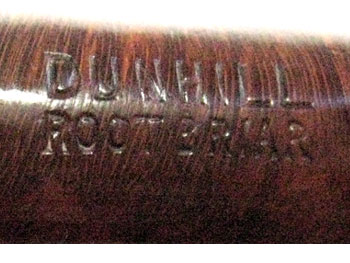 The term most likely found its way into use in the early part of the Twentieth Century through the marketing genius of Alfred Dunhill when he sought a way to differentiate exceptionally grained pipes from the rest. At the time, grain was not as highly valued as it is today, so making this distinction allowed him to sell these pipes for premium prices. The term stuck, and the legend has been promulgated by a few others since to differentiate their best pipes from the run of the mill.
The term most likely found its way into use in the early part of the Twentieth Century through the marketing genius of Alfred Dunhill when he sought a way to differentiate exceptionally grained pipes from the rest. At the time, grain was not as highly valued as it is today, so making this distinction allowed him to sell these pipes for premium prices. The term stuck, and the legend has been promulgated by a few others since to differentiate their best pipes from the run of the mill.
The one thing we can be sure of is that by the time a block of wood is crafted into a pipe, it is most certainly and surely dead; in effect, all pipes are made from dead root.
Tony always has a good question or two: Brother of Briar, I have one question. Does Perique mellow during aging? You see, I have a custom blend made for me containing burleys, dark fired Kentucky and Perique, nothing else, no Virginias at all. I’m thinking about ordering a couple pounds at one time, obviously some of it vacuum packed but the stuff that I’ll choose to jar up, will the Perique mellow or fade? Thank you, Your Eloquence!
A: Perique does mellow over the years, to some extent, but it retains a lot of its piquancy and unique flavor profile. The real concern I’d have is with the burleys. Burley is quite a chameleon, taking on the character of its surroundings readily. Though the Perique will likely hold its shape, so to speak, over time, the burley might tend to dilute the flavors a little. If stored well, meaning in containers that are both water- and gas-impermeable, it’s probably going to be fine over the long haul. But, avoid plastic at all costs, even vacuum-sealed pouches. Unless they are multi-layer, high-barrier films, like aluminized Mylar bags, you’re going to lose something over time. Stick with tins or glass jars, and you’ll be okay, at least for a couple of years.
But, all tobacco will change over the course of time. Whether you like what results from those changes or not is something only you will be able to know. One of my Italian correspondents recently told me that he much prefers my Barbary Coast fairly young. An eight year old tin he recently opened lacked the exuberant vitality that he enjoys in the more youthful vintages of the blend.
Kevin (there sure are a lot of Kevins out there) wants to know: It seems natural that tobacco would change during the course of a bowl since by time you get to the bottom, more smoke has passed through unsmoked leaf, but why do some blends change so much more dramatically than others?
A: That’s a fantastic question, and I’m glad you asked it. Next question, please.
Paul writes: I just found out about your Q&A column, started at the beginning and haven’t caught up yet, so if this has already been asked, please forgive me and just skip the question, I’ll come across the answer soon.
My question concerns the price of black-finished pipes like Dunhill’s Dress, Castello’s Perla Nera, and Peterson’s Ebony. It seems to me that they could take any old piece of wood, make pipes, fill any gaping holes with spackling paste, paint ’em black and sell ’em. Why then do they tend to cost more than rusticated and even more than some of the same brand’s blasted or smooth pipes? Don’t get me wrong, I find the black finish attractive, which is why I’m particularly vexed by the prices.
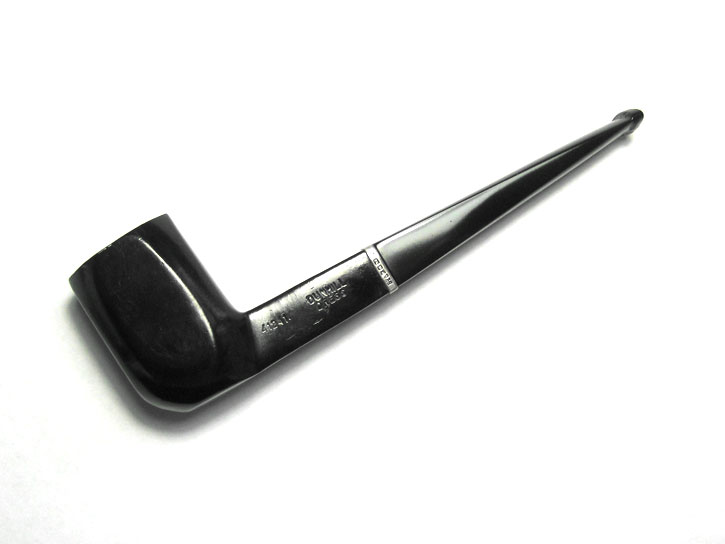
A: Black pipes aren’t easy to do well, whether smooth or sandblasted, but smooth pipes with shiny, opaque black finishes come with their own set of unique challenges, and I suspect each maker has their own secret recipe for achieving the results they want. The finish must be durable, attractive, withstand the temperatures that pipes are subjected to, and not impart any unnatural taste or smell when the pipe gets hot. I’ve tried to squeeze the technique out of a couple of makers, but they’re not telling. I suspect that, not unlike Japanese Urushi lacquer, the process of doing the black finish is painstaking, hence the high price, but that’s just a guess.
Though it would be possible to disguise flawed wood with an opaque finish, I can’t imagine a reputable maker doing so. Putty fills have a way of making themselves known over time, and when you’re dealing with a difficult finish, like shiny black, and all the heating/cooling cycles a pipe endures, plus materials with different coefficients of expansion, I’d suspect that a putty filled Frankenpipe would quickly turn into something pretty ghastly when the Bondo started falling out.
Ken wants to know: I have an aromatic blend, based on Virginias, that I like a lot but want to increase the flavoring or casing. Is this something I can do myself and what components go into an aromatic casing that a "do it yourselfer" could commonly get. I am rather impressed with the Cornell & Diehl casings, since they don’t give me tongue bite. Are these casing recipes a closely guarded secret?
A: Yes, the specific recipes for the flavoring sauces of aromatic tobaccos are tightly held, secured in underground vaults equipped with laser beams and surrounded by motes stocked with schools of hungry red bellied-piranhas. But I’d suggest you contact Cornell & Diehl, and see if they might not be able and willing to help you achieve what you’re after. Success might be just a phone call away!
Bob sent the following: Greg, I know the Syrian is gone, but Mephisto was and still is my Favorite of your blends. My question is; can you think about coming up with a blend with Mephisto’s similarities? Just something with the same basic ingredients but with a substitute of the Syrian? I mean there are other Latakias that are very good.
A: You’re not alone in missing that one. I’ve received a similar suggestion many, many times since the "Great fire of ’04." Part of Mephisto’s specific charms arose from the unique interplay of the Syrian and Cyprian Latakias. That’s not to say that another, similar blend can’t be done which will be equally enjoyable, but it will certainly be different.
As it turns out, I’ve been working on something to take Mephisto’s place in the lineup, and it’s getting quite close to what I’d like it to be. Expect some news in the early part of the new year.
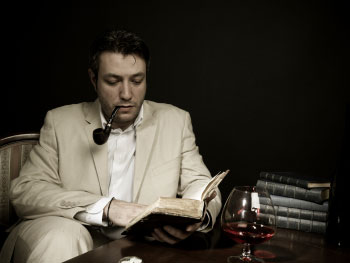 Adam poses: I was recently reading a thread on the forums here that spoke about smoking a pipe outdoors in winter (negative temperatures); and that got me to thinking – we all know what happens to tobacco that is left in the heat (say, in a car overnight in Texas in August); the bacterial-growth kicks into overdrive, and the blend is "rapidly aged" (for lack of a better term).
Adam poses: I was recently reading a thread on the forums here that spoke about smoking a pipe outdoors in winter (negative temperatures); and that got me to thinking – we all know what happens to tobacco that is left in the heat (say, in a car overnight in Texas in August); the bacterial-growth kicks into overdrive, and the blend is "rapidly aged" (for lack of a better term).
My question is, what happens to leaf that is allowed to freeze (say, left in a car overnight in Whitehorse in February). In my mind, this would have a two-fold effect, the first of which would be the death of the bacterial culture, effectively halting the aging effects (bloom); and secondly, the expansion of liquid on a cellular level would cause ruptures to the cell walls, which may also have an effect on the flavour and burning qualities of the leaf…but I could be way off the mark, and maybe it just freezes, with no detrimental effects.
Perhaps the master can shed some light on this for me? Or tell me to stop over-thinking things and just enjoy my damn pipes…
A: I called Yoda (I have his mobile phone number) to see what a true master had to say about this. His response was roughly, "How do you grow so big asking questions of this kind? Stop things over-thinking, you should, and your damn pipes, Adam, just enjoy."
I’m not about to disagree with a true master, but thought I might elaborate a little on the cryptic little fellow’s curt response. I think what he’s saying is that pipe smoking has been around for a few hundred years, and much of it has taken place in climates far colder than ours here in North America. Personally, I don’t think freezing is necessarily good for tobacco, but it’s probably not all that bad for it, either. The microbial cultures, including yeasts, molds and bacteria, don’t die, but go into a sort of suspended animation, and will come back to life when the tobacco warms. Cigar manufacturers sometimes freeze tobacco to kill tobacco beetles, their eggs and larvae, and it doesn’t seem to hurt the cigars, so any cellular damage from cryolysis is probably unimportant. In other words, don’t worry, be happy, stop over-thinking things, and just enjoy your damn pipe.
Blessings of the season to all, keep those cards and letters coming, and see you next year!
-glp
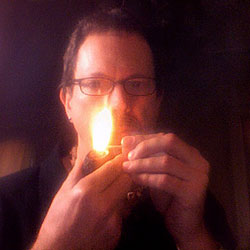
Since 1999, Gregory L. Pease has been the principal alchemist behind the blends of G.L. Pease Artisanal Tobaccos. He’s been a passionate pipeman since his university days, having cut his pipe teeth at the now extinct Drucquer & Sons Tobacconist in Berkeley, California. Greg is also author of The Briar & Leaf Chronicles, a photographer, recovering computer scientist, sometimes chef, and creator of The Epicure’s Asylum. |


















Another excellent column Greg! I was wondering about the black pipes too. I have a couple of Dunhill Dress pipes that I love. They’re from Spelling’s estate and the black is starting to fade. It will be interesting to see what they look like in a few more years. They have a solid black finish that is now 75% black, 25% brown. They were made in 1980. The two Dunhills pictured above are from my collection.
–
(By the way, neither of the Kevins above were me.)
As always another entertaining column Greg. I do look forward to this one each month.
I find myself smiling with satisfaction (yes, that can be read smarta**)that you weren’t able to come up with a truly definitive classification for “Navy Flake”.
Considering that what you’ve written is pretty much what I came up with when researching for an answer myself, can I be considered a Master in the Making? (-:
Thanks for a great read Greg!
Greg thanks for answering my question about Mephisto, I will be watching for its release. BTW what will you be naming this blend???
Thanks for the great article, but Navy Flakes contain rum. That’s my story and I’m stinking to it. We all need something to cling to in this crazy world!!!! 😉
Sticking to it STICKING!!!
Hey Greg, you wanna shoot me Yodas phone number? 😉 This was an excellent read, as always. Reading something by Mr. Pease makes me wonder why I even bother buying a pen, and I mean that in the best way possible. Thoroughly entertaining and highly informative. Thanks Greg!
Thank you for your discussion of organic tobacco. I have one more tin of Organic Pipe Dreams left, and would happily buy more if available. At the very least, I would prefer to buy tobaccos that didn’t add synthetic chemicals, or grown with harsh (potentially toxic in themselves) chemicals.
Thanks for the props, gentlemen. It’s always appreciated. As to Kevin’s question about tobaccos changing throughout the bowl, I’d actually meant to come back to it, but it was getting late, my eyes were at half-mast, and I needed to get this in to our Fearless Leader, so, in the immortal words of Steve Martin, “I forgot.”
I really wasn’t meaning to be dismissive. And, I promise to address your question more seriously in the next issue.
As for the blend that will be similar to Mephisto, I’m not telling. I promised Kevin the scoop on that one. 😉
Thanks for the great article. I always learn something from these. Looking forward
to your new Mephisto-like or not blend!
Thank you for your advice.I am trying to reformulate according to your suggestions.It seems it would take me more trial&error tests.By the way,the cigar leaf is from Cuaba cigars of the 90’s,first batch.
Like Paul, I enjoyed C&D Organic Pipe Dreams and was sad to see it disappear. I tried a sample at the St. Louis pipe show a couple of years back and was impressed enough by how good it was that I bought several tins. Being organic was a nice bonus.
Greg: as always a pleasure! I think you might mean “moats” instead of “motes”, but that is certainly a quibble…